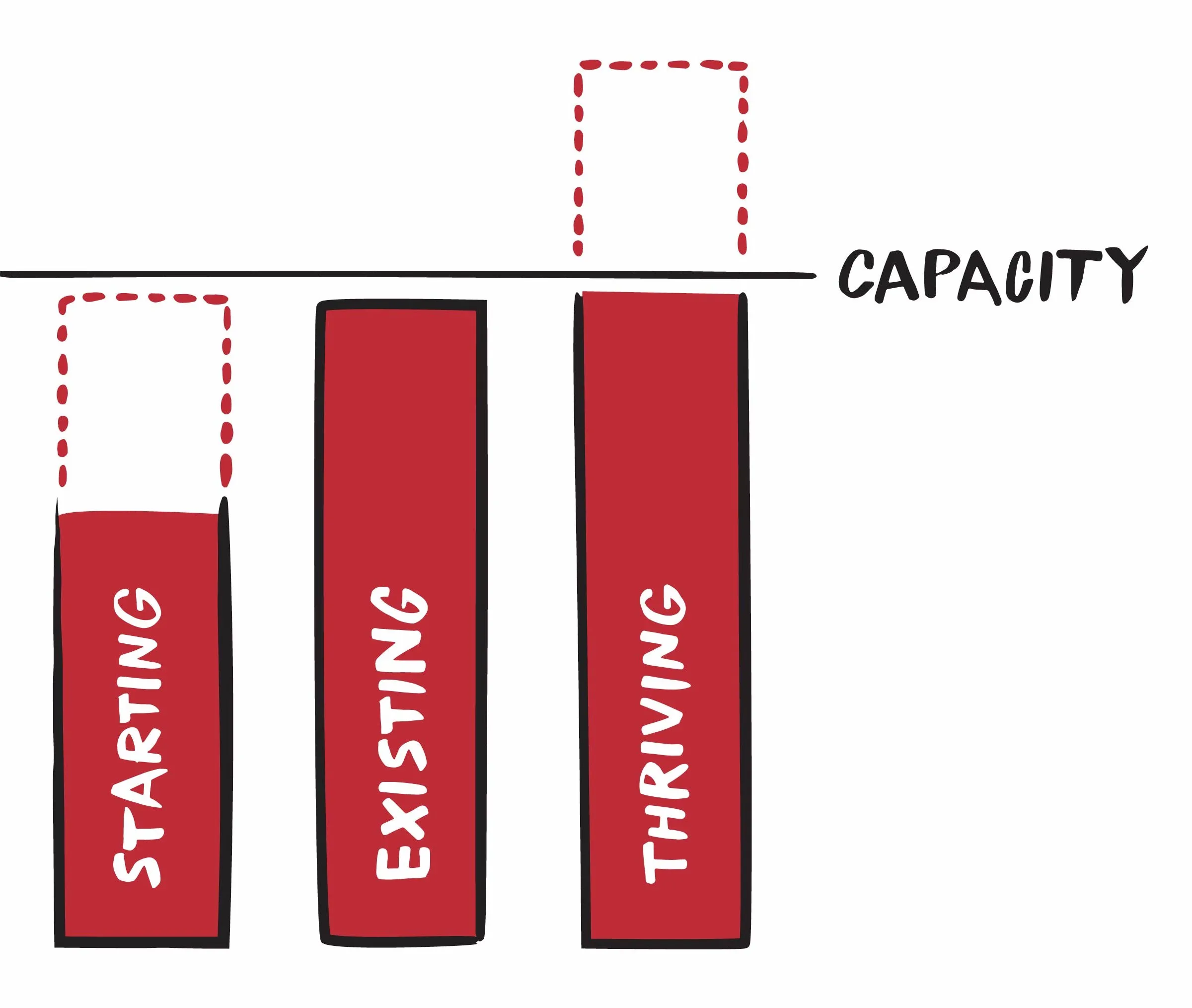The One Thing That's Going To Hold You Back
Written by

There’s one thing that will consistently hold you back from doing your best work and running a high performing firm, but it won’t come until later.
In the early steps along this path, you’ll be doing what it takes to stay busy with work from adequate clients. That means chasing referrals, spending a lot of time impressing prospects, trying to grow your accounts–the stuff everyone has to do.
But at some point you’ll have the opportunity to thrive. If it comes at all, it’ll typically be 2–5 years after some big change, like a big move or a big hire or even just founding the firm. Artificial thriving comes on the heels of one gorilla client. Substantive thriving comes at the intersection of discipline and good luck, dropping progress in your lap.
That’s when you’ll face a choice, though, that will forever change the trajectory of your firm. That choice is to say “no” and to say it emphatically.
There are a million voices screaming for you to say “yes” when that happens, though, and they sound like this:
- Society rewards growth. No big hit in the modern era has been just a steady performer. They have all had meteoric growth, funded in the early days by VC or PE money and then Uncle Barry and Aunt Karen’s 401(k) fund.
- Our clients see us as more sophisticated and capable than before and they’ve come to rely on us to solve these more comprehensive problems. If we don’t offer that service, they’ll go somewhere else for it…and possibly get lured away from us.
- My younger team members want career opportunities and ways to grow, and if I don’t provide that for them they’ll move on.
Don’t listen to those voices. Thriving does not happen without saying no. You’ll have to:
- Say “no” to bad prospects, first. Otherwise it’s like telling someone–after going to a party–that you are thrilled to have just met your future ex-spouse.
- Say “no” to bad clients, next. These are the ones who rent your hands instead of lease your brain, aren’t respectful of boundaries, aren’t comfortable with the fee, or are just selling some product or service that the world doesn’t need.
- Say “no” to initiatives that are selling more things to more clients. Instead, focus on selling the same thing to more clients or more things to the same clients, but not both at the same time. It’s usually better to not expand your offerings until you run out of opportunity with an available client base.
Thriving does not happen without saying no. If you think you have to keep saying yes, you aren’t very confident in your capabilities or positioning or lead generation.
Thriving doesn’t happen without reinventing your firm, though, either. But reinvention can easily be just another name for not sticking with the plan. Reinvention is sweetest when you do demonstrably better, more innovative work for the same clients by building on that strong foundation. If you are always reinventing your firm, you might just be undisciplined. It’s hard to tell from the outside, but if you’re always reinventing your firm and your financial performance is pretty ordinary, it might be time to buckle down and quit chasing shiny rabbits.
People say yes because they get bored with the status quo, too. But bored principals terrify me more than bored children. The illustration at the top pictures what it means to thrive, and thriving never happens without saying no to the opportunities that exceed your capacity. It means leaving the opportunities inside that dashed line above your capacity unmet and unaddressed.
In the early “starting” days you struggle to get enough work. In the middle “existing” days you are busy without generating a premium for your work. In the “thriving” days you say no to less than ideal opportunities so that you can dig deep and really do amazing work for your clients and generate a consistent pricing premium.
Are you personally going to make really good money this year? Note that I didn’t ask what your total sales will be or what your firm’s net profit will be–I asked if you will make more money this year.
The path to that goes through a whole lot of respectful “no” conversations in your own head, relying comfortably on the expertise that you’ve built, and then digging deeper and deeper.
[For extra credit, here’s a podcast episode where we talk about the metrics for these three phases.]

